Incredible version of the birth of the Su-25
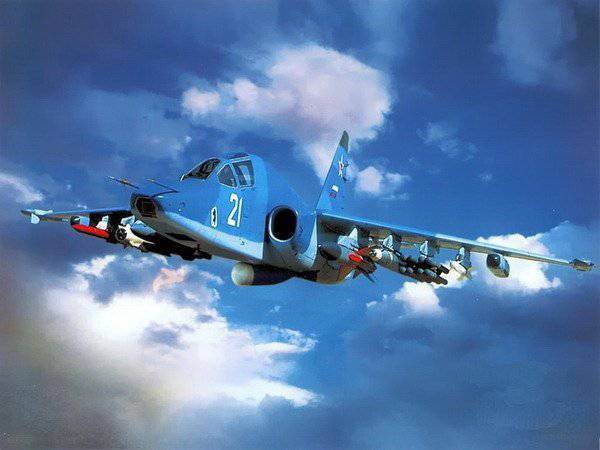
Soviet "Zone 51"
The "newcomers" arrived at the air base in Akhtubinsk in large numbered boxes, which were carefully unloaded in one of the hangars, away from the curious eyes of the personnel of the Air Force flight test center. It was here, among the Astrakhan steppes, in a secret city that is not on geographical maps, it was decided to conduct a study of objects from another world.
20 July 1976, a special commission of the Scientific Research Institute of the Air Force under the leadership of leading engineer V.M. Chumbarova opened the first box with the "alien". They found nothing unusual inside: just a set of fuel equipment and parts of a jet engine. In the next box, there was a more curious artifact - a weighty “Pilot Instructions” (at least, local polyglots were thus determined by deciphering the characters on the first pages of the foreign folio).
The day flew by. Only when the contents of the last box were removed to the racks, tired engineers finally had a smoke break. In front of them, in the bright light of electric lamps, lay two piles of metal. Now, without having at hand any drawings, diagrams or technical descriptions, from these scattered elements, it was necessary to collect valid samples of the most complex technology. System of equations with many unknowns.
However, contrary to expectations, the difficult puzzle did not cause any problems. Soviet aviators regularly encountered these problems during the Great Patriotic War, when they had to prepare for flights (and even modernize under our conditions!) At leased speeds, often in the absence of foreign instructors, and using instructions in a foreign language . So it was this time - they assembled a brigade of the most competent people in the field of airframe design, engines, radio engineering equipment, and set about the task. Domestic "Kulibins" quickly figured out all the details, mechanisms and wiring, returning the "newcomers" to a healthy state.
There were no problems with the operation of the “aliens” either: the design of their structures was simple and concise, and the maintenance of most important components did not require even stepladders and special tools. Technicians noted a convenient location and ergonomics of service points, all the hatches necessary for prelaunch preparation were thrown open with a simple movement of the hand and did not require additional accessories, and the opening of the filling points was no more difficult than in a passenger car. However, the filling process itself did not look the best - technicians had to stand on the machine on their knees. Here is such ergonomics.
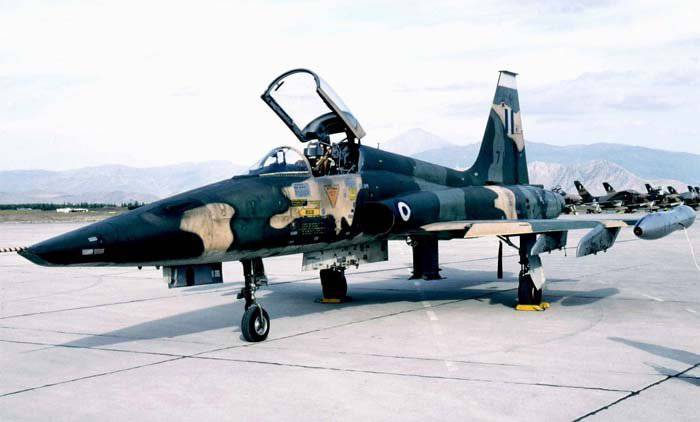
Soviet aircraft technicians were irritated by the abundance of exclamation marks and formidable warning signs that began with the words "WARNING" and "DANGER" with what seemed to be the most obvious content - the creators of the "newcomers" seemed to pay close attention to "fool protection". Before each departure from the car, it was required to remove about a dozen plugs and removable checks, protecting the “newcomer” from accidentally removing the landing gear in the parking lot or unintentionally triggering weapons. With such unprecedented security measures, you need to be a complete donkey to do something wrong when preparing for the flight.
Tigers vs. MiGs
By the end of the ground-based research cycle, an extensive flight test program was already prepared, and the foreign test equipment was entrusted to the leading test pilots of the Air Force Scientific Research Institute, Heroes of the Soviet Union N.I. Stogovu, V.N. Kondaurovu and A.S. Beige.
On the keel of the tactical fighter F-5E "Tiger II" drew big red stars (and then!), Replaced the instrument scales on the dashboard with American miles and feet with our usual meters and now, finally, on a cold December morning 1976, the American trophy the plane rolled out onto the runway of the Akhtuba Flight Test Center.
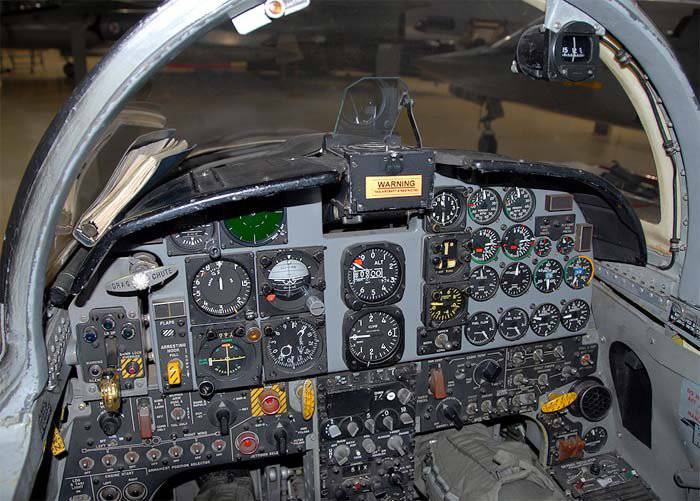
The honored test pilot of the USSR, Hero of the Soviet Union, Colonel Vladimir Nikolaevich Kandaurov recalls:
Decided to run on a second, longer runway. "The stock pocket does not pull," I thought, taxiing to the strip. Of course, what to hide, I was proud that this unique copy in the USSR was entrusted to me.
He turned on the front desk uplift - he earned an electro-hydraulic lift and the nose of the plane "climbed" up. “Wow, how!” I shook my head in surprise. “Couldn't you have done this without such a baby?” In my opinion, not the most common method to reduce the length of the run. We used this aircraft only VMMyasishchev M-3 and M-4 - heavy long-range bombers.
From the very first seconds of the takeoff, the pilot realized that an increase in the angle of attack on the takeoff was not a luxury, but a necessity. The frail engines of the Tiger reluctantly dispersed the car: the F-5E was equipped with two General Electric turbojets with a 15 kN each. For comparison, the TRG MiG-21bis reached 70 kN in the unformed mode. As a result, even with a snuffed nose, the Tiger needed a strip of 900 meters in length for the run. A lot for such a small plane.
Alas, the first test run almost ended in disaster - the chassis of the American fighter was horrified by the quality of the Russian “concrete”, and the large gaps between the plates finally damaged the front support. The takeoff run was urgently interrupted, and only the skill of the pilot allowed to avoid serious damage.
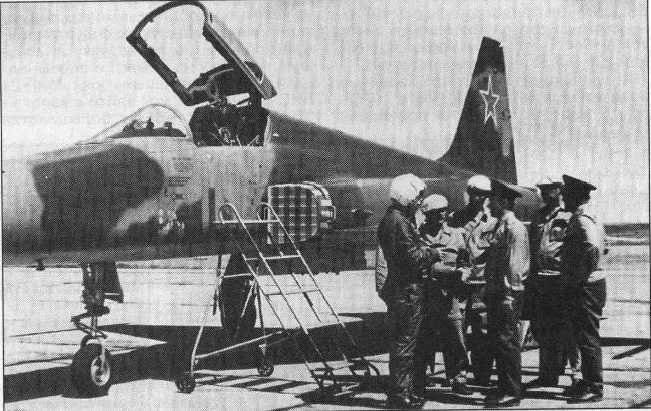
After a short-term repair, the F-5E returned to service, this time to conduct training aerial battles with its peer, the front-line fighter MiG-21bis. The most exciting part of the test program began.
On paper, the MiG was almost X times longer than the “Tiger” in terms of thrust-to-weight ratio, speed (about 2М against 2М), rate of climb (1,6 m / s against 225 m / s) and in all other dynamic characteristics. The best test pilots were sitting at the wheel of the cars, one and all Heroes of the Soviet Union. Equal conditions for the start of the battle, in tanks the optimum amount of fuel, telemetry systems are included. Take off!
18 battles were conducted by the Soviet aces, and not once MiG-21bis could not enter the tail of the F-5E. The devil was hiding in the details: a smaller unit load on the wing, developed nodules in the root of the wings, slotted flaps and advanced slats - all this gave the F-5E advantage in close combat. The “American” was also helped by its original “shark” nose, equipped with vihregenerators - such a design significantly increased the stability of the “Tiger” at low speeds, making it possible to conduct a maneuverable air battle at critical angles of attack.
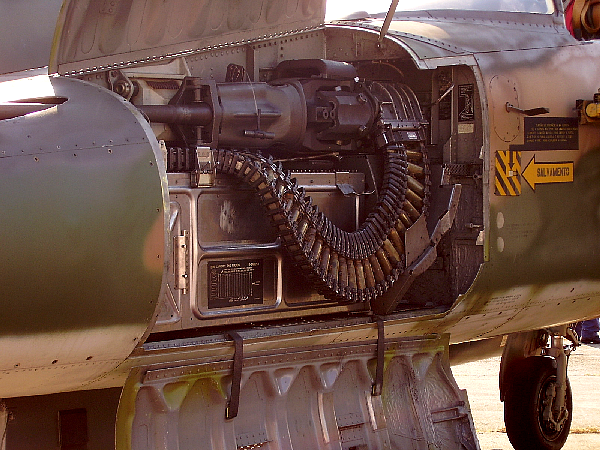
The armament of the small fighter was also initially “sharpened” for maneuverable battles - two built-in automatic guns of the 20 caliber mm with 280 ammunition for shells per barrel. All this, coupled with an excellent view from the cockpit, made the "Tiger" an extremely dangerous enemy in melee.
Experienced experts also noted the great vitality of the F-5E, thanks to its twin-engine layout and the lack of wing fuel tanks - the plane could return from a job with riddled planes.
It is fair to note that in the event of a real combat collision of the MiG-21bis and F-5E, the American fighter did not expect anything good. The Soviet machine could have triumphed when the air battle was tied up - thanks to its more powerful Sapphire radar, the MiG could detect the enemy earlier and take an advantageous position for an unexpected attack. The high fighter-weight ratio of the Soviet fighter gave him a chance to get out of the battle, if suddenly the situation takes a turn that is unfavorable and dangerous for him.
According to test pilot Vladimir Kondaurov, the American Tiger’s maneuverability was completely lost at speeds above 800 km / h, although in this case, the turn radii became so large that the pilots lost visual contact with each other and the air battle stopped .
And yet, the results looked clearly disappointing. The arrival of the aircraft manufacturers commission was also at a loss - to bring such reports to Moscow means to get big problems on my head. There was nothing left to do but put up against the F-5E the more modern MiG-23. The conditions of the battle were initially unequal, and, the results of the air battle were quite predictable. "Twenty-third" could not get involved in the near maneuver combat, because he was armed with a medium-range air-to-air missile P-23. MiG-23 could easily shoot the "Tiger" from the distance 40 km. At the same time, in the closest air combat, the large MiG-23 was inferior in maneuverability even to the MiG-21: the nimble "Tiger" curled with impunity around his opponent.
The tests were completed on this - the aircraft were transferred to Moscow at the Chkalovsk airfield, where a presentation was held for the Commander-in-Chief of the Air Force, P.S. Kutakhov. As expected, the reaction was similar to a deafening thunderclap. The captured American cars have never been lifted into the air since then, and in the recommendations for conducting air battles a point was added in which it was advised not to engage the F-5E "Tiger II" in close combat, preferring more advantageous "hit-run-off" tactics. .
Fighter for export
The tactical fighter F-5 is a special American development for arming its allies. The specific purpose determined the appearance of the car: unlike expensive, radio-saturated and difficult-to-operate US Air Force aircraft, in 1959 the Northrop company created a lightweight fighter that was as cheap as possible and adapted for local conflicts. Potential customers were not interested in high-tech equipment, on the contrary, reliability, low operating cost, ease of piloting and machine versatility were at the forefront.
The fighter with the saying name "Freedom Fighter" (Freedom Fighter) confidently pressed its rival - the "flying coffin" F-104, which the Americans were trying to attach somewhere, just to get rid of the obviously unsuccessful machine. F-5 entered service with 30 countries of the world, and in many of them it is still in use.
Despite the “export” status of these machines, the US Air Force ordered a small batch of these aircraft during the Vietnam War, an F-5C modification (included the installation of “advanced” electronics, an air refueling system and 90 kg of armor). In Vietnam, the heavy name "Freedom Fire" somehow changed by itself to a more resonant "Tiger" (Tiger).
In 1972, a new modification of the F-5E "Tiger II" appeared, radically different from the base F-5. More powerful and high-torque engines were installed, a primitive radar appeared. The aircraft of this type from the Air Force of South Vietnam hit Akhtubinsk in 1976 year.
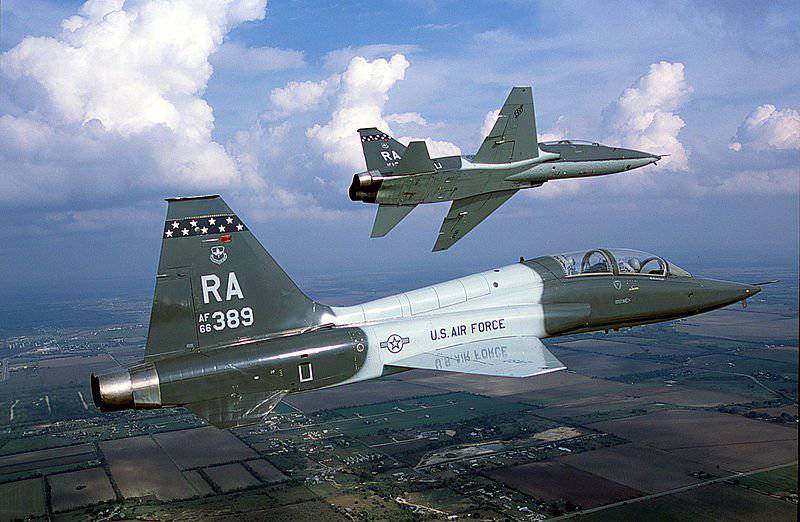
F-5 left its mark on another field - on the basis of its design the T-38 “Talon” aircraft was created, which has been the main training and training machine of the NATO countries for 50 for years.
Well, on the basis of its characteristics, the F-5 Tiger / Freedom Fighter is one of the best fighters of the Cold War, which has been undeservedly forgotten in the shadow of its clumsy F-4 fellow Phantom.
Dragonfly
The attentive reader probably noticed that initially there was a conversation about two "aliens" - two trophies that we got for detailed study after the end of the Vietnam War. Where did the second "alien" go? What was this plane?
The second was the light attack jet attacker A-37 "Dragonfly". At first, the unpretentious flattened car did not cause any positive emotions among domestic specialists: some sort of nonsense for a war with the natives and the performance characteristics to match: max. 800 km / h speed, 2 crew of a person (why not alone?), combat load: built-in 6 two-barreled machine gun in the forward part of the machine, up to 2,5 tons of bombs and tanks with napalm on underwing pylons (almost as much as weighed himself "Dragonfly").
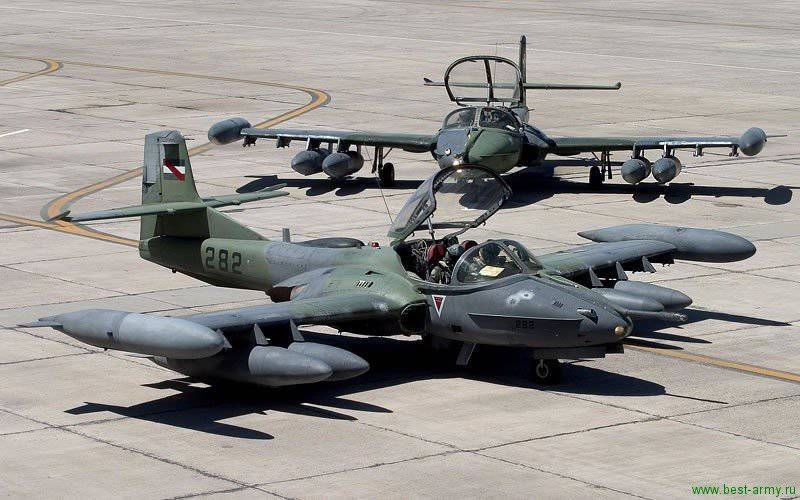
However, even in this primitive plane, the Soviet military experts managed to find quite a few “surprises”: first of all, a fully armored cabin, reliably protecting the crew from small arms bullets. Return of the legendary attack aircraft IL-2?
One of the participants in the tests jokingly recalled how long he had been searching for a "multi-kilogram cabinet" of an 20-channel VHF radio station in the "Dragonfly" booth, which, as it turned out, was a unit that fits in the palm of his hand. The curious eye of specialists quickly identified the most curious moments of the American machine: for example, our aircraft technicians really liked the method of connecting the wires by “crimping” without a soldering iron, which greatly simplified the maintenance of the aircraft in front-line conditions.
The results
After extensive tests in the interests of the Air Force, both captured aircraft were transferred to the Sukhoi Design Bureau, where at that time the aircraft was being designed to support the troops directly - the T-8 product (the future Su-25 Grach). A close acquaintance with foreign technologies was most welcome: a control system for the Su-25 attack plane was designed on the basis of successful servo compensators of the Dragonfly attack aircraft. Also, from the American "Dragonfly" Su-25 inherited a rational booking scheme and an effective filler tanks based on polyurethane foam with a cellular structure. Not less interesting results were given by the study of the tactical fighter F-5E “Tiger II”, on the basis of which the wing “Rook” with developed mechanization was designed.
The moral of this stories is this: as has been said more than once, the devil is in the details. Especially in such a knowledge-intensive industry as aircraft. Here, too, the quality of the performance and the imperceptible details of the ordinary eye, on which, ultimately, the outcome of the air battle depends, plays a big role.
As for the beneficial influence of “overseas technology” on the creation of the Sukhoi Design Bureau aircraft and eternal moral and ethical questions about copying technical solutions: “Do we have a right?”, “How are we different from China then?”, Here, it seems to me, the answer is simple - This is normal world practice. Any technique is always created with an eye to foreign analogues. Moreover, if in the samples that fell into our hands aviation Since there were really innovative and useful ideas in technology, there was no reason to neglect foreign experience (obtained, by the way, not by our blood in the jungle of Vietnam).
During the Cold War, the United States was able to obtain, for detailed acquaintance, the entire spectrum of Soviet aviation technology, relatively speaking, from the MiG-15 to the MiG-25. It is indisputable that each sample was carefully studied with great prejudice and, for sure, foreign experts discovered many new and interesting things for themselves.
Well, we were lucky only once.
The story about the amazing events that occurred in Akhtubinsk in 1976 year, written on the basis of the facts from the book VN Kondaurova "The runway of a long life"
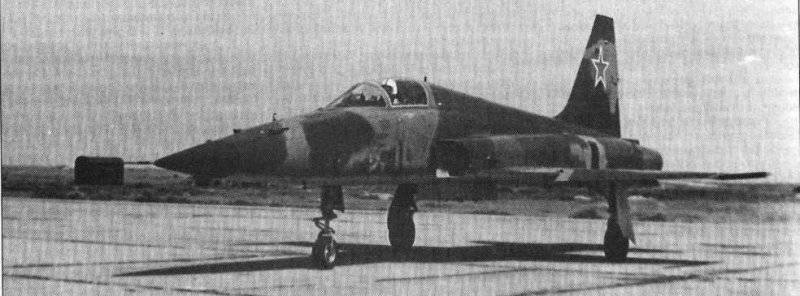
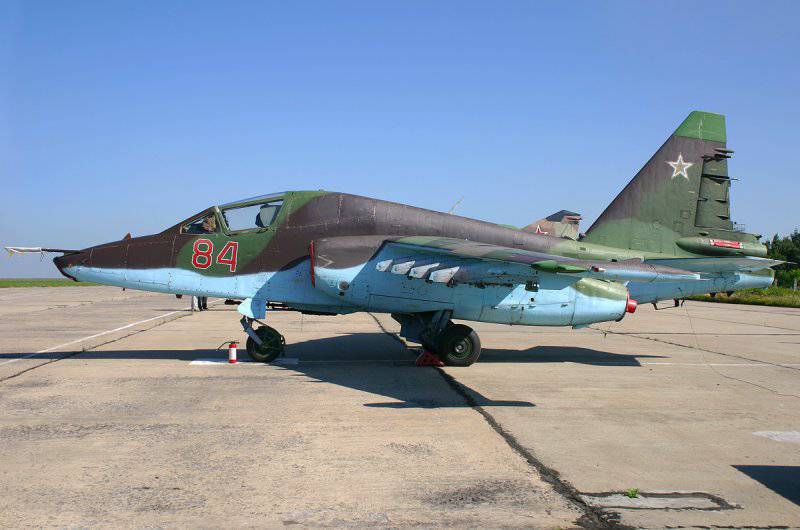
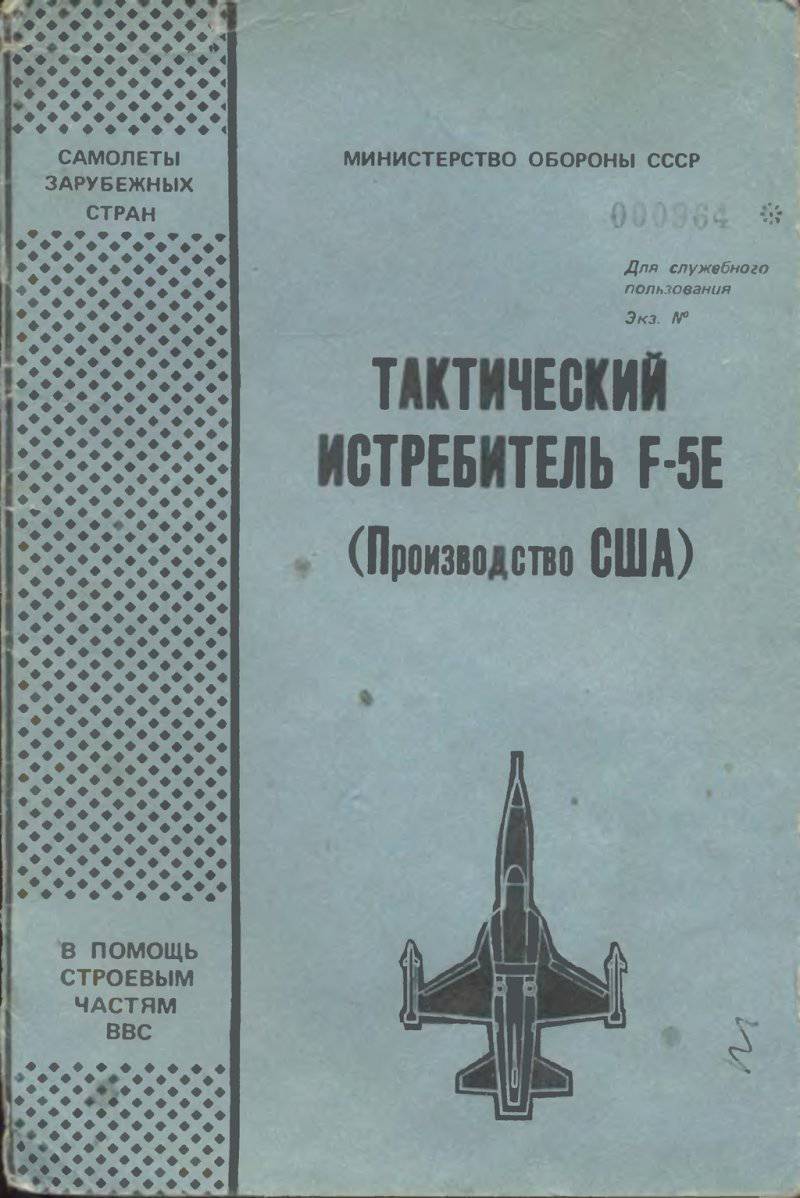
Information